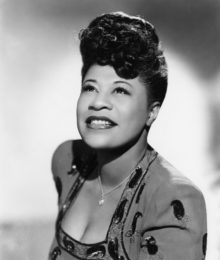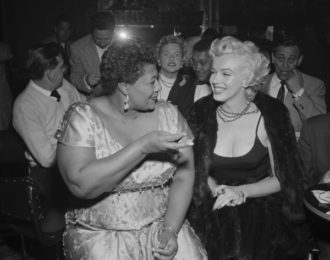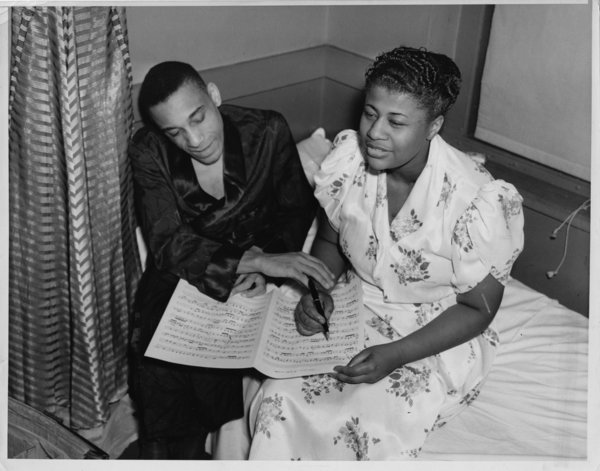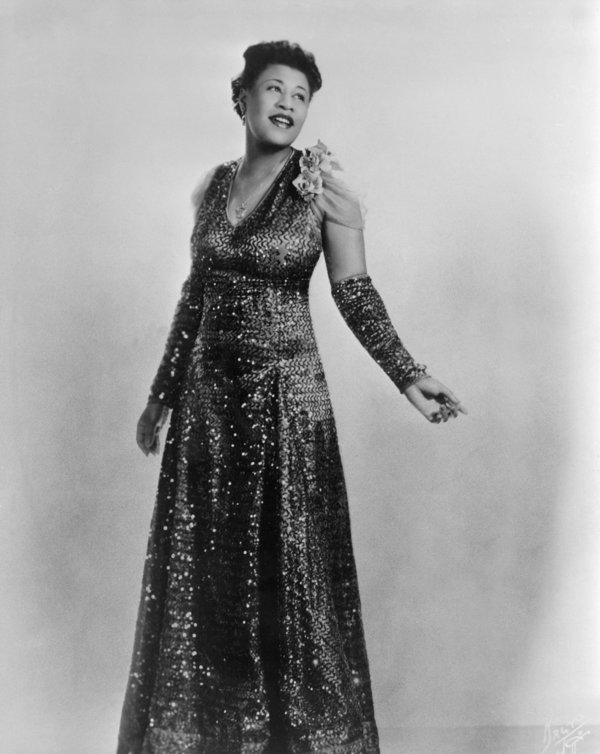The First Lady of Jazz, Ella Fitzgerald would have turned 100 years old on the 25th of April. Her influence spans not only jazz as a genre but also as a trailblazer and a widely respected figure withing a society founded on racism and sexism.

Ella Fitzgerald’s career spanned more than half a century and culminated in 13 Grammy awards and the sale of over 40 million albums. A known philanthropist, Fitzgerald used plenty of her earnings from music to make large donations to charities supporting child welfare, a personal passion of hers.
As opposed to many musicians of her time who had a team of writers creating their music, Ella’s creative vision saw her composing her own music. The fame of Ella’s mellifluous vocal styles, masterful improvisation and expertise in scat singing permeated among communities of all races, genders, lifestyles and economic positions.
Ella once said,
“Music is the universal language…its brings people closer together.”
Ella’s popularity even extended to the superstar siren Marilyn Monroe, who once claimed that she would attend every night to the popular nightclub Mocambo, provided that Ella Fitzgerald was playing. When the owner hired Fitzgerald, Monroe stayed true to her word and could be found seated in the front row, centre every evening.

Image Credit: Huffington Post
The rise to fame of the sublime Ella Fitzgerald was not always so dazzling. Her upbringing was described as ‘humble but happy’, growing up with her mother, stepfather and half-sister in an integrated area in the town of Yonkers, New York.
This took a turn when Ella’s mother passed away after a car accident, which was quickly followed by her step-father’s passing from a heart attack. This led to the sisters moving to live with Ella’s aunt Virginia.
The events deeply shook the 15-year-old Ella, sending her into a spiral of depression as she struggled to adjust to her new circumstances. Upon being arrested by police following a period of disruptive behaviour, she was condemned to a strict reform school.
Upon escaping, Ella became homeless and through a process of random selection, she was given the opportunity to perform at an amateur evening at the Apollo. Having tap danced on the streets to earn money, Ella decided to translate this act to the stage. However, facing the crowd after an impressive dance act by the Edwards Sisters, a nervous Ella took the stage and made the impulse decision to sing instead. This lead to cries for an encore, the first of many to come. She once explained,
“I’m very shy, and I shy away from people. But the moment I hit the stage, it’s a different feeling. I get nerve from somewhere; maybe it’s because it’s something I love to do.”

Although Fitzgerald was denied payment for her performances at the Apollo for a week due to her dishevelled appearance, she got more than she had bargained for that evening. Benny Carter, a saxophonist, was playing in the band and was so impressed by Ella that he introduced her to her mentor, eminent jazz and swing drummer, Chick Webb. Webb took her under his wing, hiring her as part of his band performing at Harlem’s renowned Savoy Ballroom.
Acclaim exalted Ella at the age of 21 upon the release and subsequent sale of 1 million copies of her version of the nursery rhyme, “A-Tisket, A-Tasket.” This brought Ella into the spotlight. She began regularly appearing on famous television shows such as “The Frank Sinatra Show”, “The Ed Sullivan Show” and the “Nat King Cole Show.”
Beyond her solo career, she collaborated successfully with esteemed artists such as Louis Armstrong, Duke Ellington and the Ink Spots.
Ella Fitzgerald transcended the traditional ideals of womanhood during a time period in which women were beginning to reevaluate their place in society and actively approach change. This was epitomised in the trend of the ‘flappers’ of the 1920s. The image of a young woman wearing a loose, straight cut dress that was controversially shortened to just below the knee will immediately come to mind when thinking about flappers.

However, fashion was only one element of this advancing movement of independence. Flapper women were also associated with socially contentious behaviour of wearing excessive makeup, smoking cigarettes, drinking alcohol, driving cars and taking part in casual sex and other non-traditional relationships.
Ella Fitzgerald was a prominent figure in this movement in her professional and private life, playing a particularly meaningful role for women of colour. Jazz was traditionally reserved for men before she ascended upon the scene and as the first successful woman in jazz, she earned the title, First Lady of Jazz. Her place in the music industry was groundbreaking and gave legitimacy to women entering not only jazz but the working world in general. At home she also asserted her autonomy, having two marriages that both ended in divorce and still successfully supporting herself.

Ella Fitzgerald passed away on June 15, 1996 following a quintuple coronary bypass surgery and complications from diabetes that saw her lose both of her legs below the knees. She continued performing for as long as she could, giving her final concert at Carnegie Hall in 1993.
In a career that saw the release of over 200 albums and the achievement of the National Medal of Arts, Ella Fitzgerald was a pioneer both socially and in jazz. Her unforgettable vocals, creativity. heart and spirit place her as one of the most influential musicians of all time.







